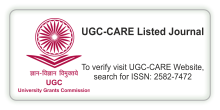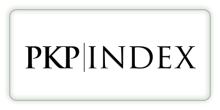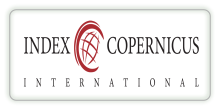EXCHANGE RATE, GDP, AND INTEREST RATE AS DRIVERS OF IT EXPORTS IN INDIA: A REGRESSION-BASED STUDY
DOI:
https://doi.org/10.29121/shodhkosh.v5.i4.2024.3982Keywords:
IT Exports, Exchange Rate, GDP, Interest Rate, India, Regression AnalysisAbstract [English]
This research explores what drives India’s IT exports, focusing on how exchange rates, economic growth, and interest rates play a role. Using data from 2012 to 2022, daily fluctuations in the Indian rupee-to-dollar exchange rate were averaged annually to capture trends, while yearly IT export figures (in ₹ crore), GDP changes, and interest rates were sourced from official reports. Over the ten-year period, IT exports averaged ₹710,212 crore, though this varied widely by year. The exchange rate between the Indian rupee and US dollar also shifted considerably, averaging 65.74 with noticeable fluctuations. Economic growth, measured by GDP, saw ups and downs—even dipping into negative territory during tough years—while interest rates ranged from historic lows to nearly 8%.
The data shows that currency rates have a major impact on IT exports. A stronger rupee against the dollar exhibited a strong correlation with increased export income, accounting for nearly 92% of the observed fluctuations. In contrast, GDP changes and interest rates had little direct influence when considered independently. However, when paired with exchange rates, interest rates became relevant, suggesting combined effects on export performance. While some overlap between variables was noted, the models remained reliable.
These findings highlight the outsized influence of currency dynamics on India’s IT sector. For businesses, managing exchange rate risks is critical to maintaining stability. For policymakers, fostering a predictable currency environment could help sustain India’s competitiveness in global IT markets.
References
Malik, M. H., & Velan, N. (2020). An analysis of IT software and service exports from India. International Trade, Politics and Development, 4(1), 3-25. DOI: https://doi.org/10.1108/ITPD-12-2019-0012
Lahiri, H. (2020). India’s Software Export and External Factors. Role of IT-ITES in Economic Development of Asia: Issues of Growth, Sustainability and Governance, 49-62. DOI: https://doi.org/10.1007/978-981-15-4206-0_5
Hassan Malik, M., & Hassan Malik, S. (2014). Determinants of software exports during global economic slowdown. Journal of Science & Technology Policy Management, 5(3), 212-230. DOI: https://doi.org/10.1108/JSTPM-04-2014-0010
Paramati, S. R., Gupta, R., Maheshwari, S., & Nagar, V. (2016). The empirical relationship between the value of rupee and performance of information technology firms: Evidence from India. International Journal of Business and Globalisation, 16(4), 512-529.
Kumar, P., & MazharP, S. S. (2022). Study of Factors Affecting Software Services Exports in India and its Performance Since 2010. International Management Review, 18, 104-122. DOI: https://doi.org/10.47701/icohetech.v3i1.2152
Mathur, S. K., & Shekhawat, A. (2018). Exchange rate nonlinearities in India’s exports to the USA. Studies in economics and finance, 38(1), 1-12. DOI: https://doi.org/10.1108/SEF-07-2015-0179
Vittala, K. R., Subramanyam, M., & Manjunath, K. M. (2018). External hedging strategies of Indian IT industry to arrest the currency volatility. ZENITH International Journal of Multidisciplinary Research, 8(1), 21-45.
Mohapatra, S. M. (2020). Exchange rate exposure and firm productivity in India. Journal of Financial Economic Policy, 12(4), 531-543. DOI: https://doi.org/10.1108/JFEP-04-2019-0071
Gupta, S., Ghosh, P., & Sridhar, V. (2022). Impact of data trade restrictions on IT services export: A cross-country analysis. Telecommunications Policy, 46(9), 102403. DOI: https://doi.org/10.1016/j.telpol.2022.102403
Damani, A., & Vora, V. (2018). An Empirical and Analytical Study of the Factors Affecting the Exchange Rate Fluctuation in India. International Journal of Innovative Studies in Sociology and Humanities, 3(3), 1-14.
www.rbi.org.in
www.nseindia.com
www.worldbank.org
Downloads
Published
How to Cite
Issue
Section
License
Copyright (c) 2024 Santosh. N, Dr. M. Muniraju

This work is licensed under a Creative Commons Attribution 4.0 International License.
With the licence CC-BY, authors retain the copyright, allowing anyone to download, reuse, re-print, modify, distribute, and/or copy their contribution. The work must be properly attributed to its author.
It is not necessary to ask for further permission from the author or journal board.
This journal provides immediate open access to its content on the principle that making research freely available to the public supports a greater global exchange of knowledge.































